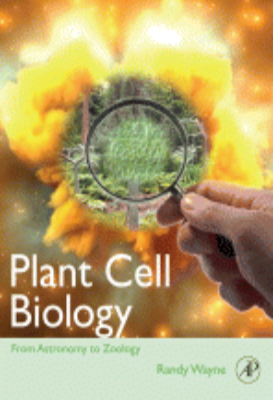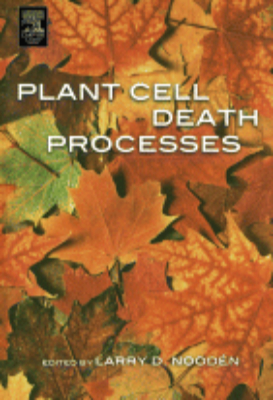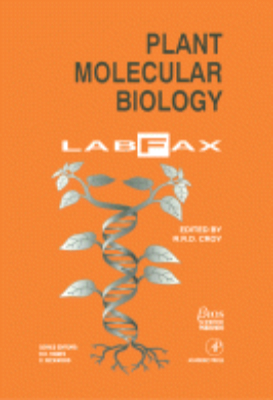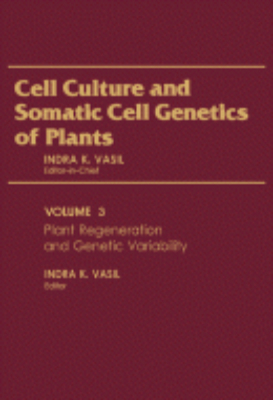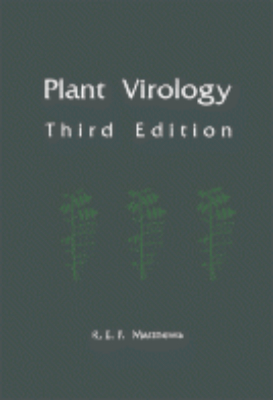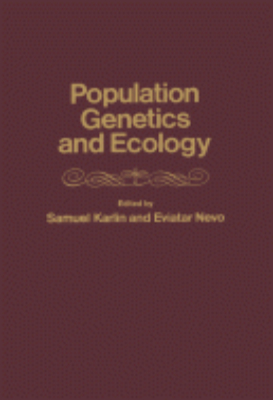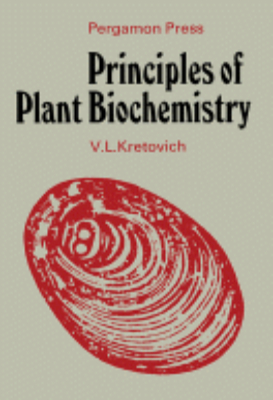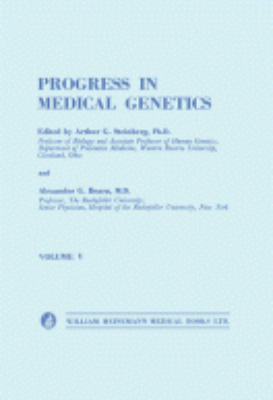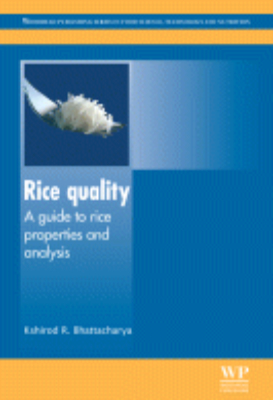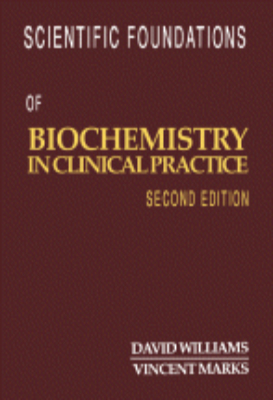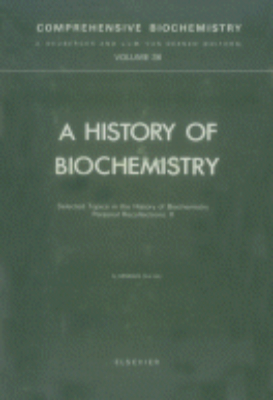Life Science
Plant Cell Biology
"Plant Cell Biology is a semester long course for undergraduates and graduate students which integrates mathematics and physics, two years of chemistry, genetics, biochemistry and evolution disciplines. Having taught this course for over ten years, the author uses his expertise to relate the background established in plant anatomy, plant physiology, plant growth and development, plant taxonomy, plant biochemistry, and plant molecular biology courses to plant cell biology. This integration attempts to break down the barrier so plant cell biology is seen as an entre into higher science.Distinguishing this book from papers that are often used for teaching the subject which use a single plant to demonstrate the techniques of molecular biology, this book covers all aspects of plant cell biology without emphasizing any one plant, organelle, molecule, or technique. Although most examples are biased towards plants, basic similarities between all living eukaryotic cells (animal and plant) are recognized and used to best illustrate for students cell processes. Key Features. Thoroughly explains the physiological underpinnings of biological processes to bring original insight related to plants. Includes examples throughout from physics, chemistry, geology, and biology to bring understanding to plant cell development, growth, chemistry and diseases. Provides the essential tools for students to be able to evaluate and assess the mechanisms involved in cell growth, chromosome motion, membrane trafficking, and energy exchange. Companion Web site provides support for all plant cell biology courses"
Plant Cell Death Processes
Programmed cell death is a common pattern of growth and development in both animals and plants. However, programmed cell death and related processes are not as generally recognized as central to plant growth. This is changing fast and is becoming more of a focus of intensive research. This edited work will bring under one cover recent reviews of programmed cell death, apoptosis and senescence. Key Features Summaries of the myriad aspects of cell death in plants Discussion of the broadest implications of these disparite results A unification of fields where there has been no cross talk Enables easy entry into diverse but related lines of research
Plant Cell Organelles
Plant Cell Organelles contains the proceedings of the Phytochemical Group Symposium held in London on April 10-12, 1967. Contributors explore most of the ideas concerning the structure, biochemistry, and function of the nuclei, chloroplasts, mitochondria, vacuoles, and other organelles of plant cells. This book is organized into 13 chapters and begins with an overview of the enzymology of plant cell organelles and the localization of enzymes using cytochemical techniques. The text then discusses the structure of the nuclear envelope, chromosomes, and nucleolus, along with chromosome sequestration and replication. The next chapters focus on the structure and function of the mitochondria of higher plant cells, biogenesis in yeast, carbon pathways, and energy transfer function. The book also considers the chloroplast, the endoplasmic reticulum, the Golgi bodies, and the microtubules. The final chapters discuss protein synthesis in cell organelles; polysomes in plant tissues; and lysosomes and spherosomes in plant cells. This book is a valuable source of information for postgraduate workers, although much of the material could be used in undergraduate courses.
Plant Improvement and Somatic Cell Genetics
Plant Improvement and Somatic Cell Genetics includes all but one of the papers presented at two symposia held during the XIII International Botanical Congress in Sydney, Australia, on August 21-28, 1981. ""Frontiers in Plant Breeding"" and ""Cell Culture and Somatic Cell Genetics in Plant Biology"" highlight the ways in which plant breeding techniques can improve crops. The book explores the potentials as well as the limitations of plant breeding, and cellular and molecular techniques in plant improvement. Comprised of 14 chapters, this volume begins with an overview of the potential applications of exotic germplasm for tomato and cereal crop improvement. It continues with a discussion of multiline breeding, breeding of crop plants that can tolerate soil stresses, combining genomes by means of conventional methods, use of embryo culture in interspecific hybridization, use of haploids in plant improvement, and somaclonal variation and somatic hybridization as new techniques for plant improvement. The reader is also introduced to plant cell culture, as well as somatic cell genetics of cereals and grasses, somatic cell fusion for inducing cytoplasmic exchange, uses of cell culture mutants, genetic transformation of plant cells by experimental procedures in the context of plant genetic engineering, and use of molecular biology techniques for recognition and modification of crop plant genotypes. This book will be a useful resource for scientists and plant breeders interested in applying somatic cell genetics for crop improvement.
Plant Molecular Biology Labfax
LABFAX volumes are purpose-designed data reference books for practicing scientists. Each book presents key information for a major subject in one place and so saves hours of searching. It does not simply collect together data which are already available in catalogs, since these are often incomplete and can contain conflicting information. Rather, the authors and editors of each LABFAX volume have searched the original literature for the accurate data which they know the specialist needs. Plant Molecular Biology Labfax is a detailed compendium of essential information on plant nucleic acids, transformation and expression vectors, selectable genes and reporter genes, gene expression and PCR techniques, etc. A key feature is the Plant Gene Index, comprising comprehensive tables of plant genes published and submitted to sequence databases. Plant Molecular Biology Labfax, while specializing in molecular aspects of plant science, inevitably has numerous sections dealing with general molecular biology which complement the extensive information provided in Molecular Biology Labfax. It is therefore a worthy companion to this text.
Plant Virology: Second Edition 1981
Plant Virology, Second Edition, was written to cover the substantial developments in many areas of plant virology since the first edition was published. Advances have been made in all branches of the subject, but these have been most far reaching with respect to the structure of viruses and of their components, and in the understanding of how viral genomes are organized and how viruses replicate in cells. Significant developments have also occurred in the understanding of how viruses are transmitted by invertebrates and in the application of control measures for specific diseases. The taxonomy of viruses has advanced significantly, and there are now 25 internationally approved families and groups of plant viruses. All these developments have required that most sections be entirely rewritten. This book is intended primarily for graduate students in plant pathology, plant virology, general virology, and microbiology, and for teachers and research workers in these fields. It should also prove useful to some people in related disciplinesmolecular biologists, biochemists, plant physiologists, and entomologists.
Plant Virology: Third Edition 1991
Major developments have taken shape in the ten years since the publication ofPlant Virology, Second Edition. This Third Edition of the leading comprehensive text and reference for the field contains more than sixty percent new material, including applications and results of gene manipulation techniques. As with the first and second editions, this volume covers all aspects of plant virology, from molecular to ecological.Plant Virology, Third Edition, is intended for graduate students, researchers, and teachers in plant virology, plant pathology, general virology, and microbiology, and scientists in related areas of molecular biology, biochemistry, plant physiology, and entomology.
Population Genetics and Ecology
Population Genetics and Ecology is a collection of papers presented at a 1975 conference-workshop held in Israel and is devoted to topics in population genetics and ecology. Contributors discuss topics related to population genetics and ecology, including the determinants of genetic variation in natural populations; experimental design and analysis of field and laboratory data; and theory and applications of mathematical models in population genetics. The book describes a number of field and laboratory studies that focus on a variety of spatial and temporal character and enzyme frequency patterns in natural populations, along with possible associations between these patterns and ecological parameters. This volume is organized into three sections encompassing 31 chapters and begins by summarizing the results of field and laboratory research that investigated gene frequency patterns in space and time of animal and plant populations. This book then explains the origin of new taxa; animal and plant domestication; variation in heritability related to parental age; and problems in the genetics of certain haplo-diploid populations. The next section offers a combination of data analyses and interpretations of related models, with some papers devoted to the origin of race formation and the interaction between sexual selection and natural selection. Among the theoretical studies presented are facets of selection migration interaction; stochastic selection effects; properties of density and frequency dependent selection; concepts and measures of genetic distance and speciation; aspects of altruism; and kin selection. This book will be of interest to naturalists, experimentalists, theoreticians, statisticians, and mathematicians.
Practical Biochemistry for Colleges
This book presents a selection of tried and trusted laboratory experiments in the field of biochemistry. The experiments are described in detail and can be used directly or in a modified form. They are grouped according to a broad range of biochemical disciplines which allows those responsible for arranging practical classes to select experiments to complement any given biochemistry course. Suggestions are made for further work in more advanced classes. As well as the practical method the experiments are accompanied by background information, discussion of results, references for further study and illustrations.
Practical Botany
Practical Botany for Advanced Level and Intermediate Students, Fifth Edition is a five-part laboratory manual covering the syllabuses in Botany of the advanced level students and other examinations of similar standard. This laboratory manual must be used in conjunction with textbooks of botany. The Introduction presents general instructions for practical work and for the keeping of practical notebooks and a list of apparatus and instruments required, as well as a summary of the characteristics of living organisms, the differences between plants and animals and the principles of plant classification. Part I describes the features and methods of use of the microscope, while Part II contains intensive discussions on the evaluation of the morphological, cytological, and histological aspects of plants. The remaining parts cover the biochemical, physiological, and genetic aspects of the plant experiments. This book is directed toward advanced and intermediate level botany teachers and students.
Practical Guide to Neurogenetics-key
This simple guide to neurogenetics demystifies the overwhelming amount of information on the subject so you can identify key clinical features and understand your management options. Reach relevant differential diagnoses and provide appropriate counseling to your patients using the symptom-based approach. By integrating genetic and neurological approaches to diagnoses, this book ensures that the neurological consequences of a genetic diagnosis and the genetic consequences of a neurological diagnosis are clear and explicit. Concise and portable, this book is ideal for easy reference in clinical use.
Principles and Measurements in Environmental Biology
Principles and Measurements in Environmental Biology aims to provide an understanding of some important physical principles and their application in biology. The book also aims to describe how instruments utilizing these principles can be used to measure biological and environmental processes and their interactions. This book covers the effects of the environment on biological organisms; the application of theories of radiation, kinetic theory, gas laws, and diffusion in biology; and water and its properties. The relation of plants with atmosphere near the ground is also discussed. This book also presents sampling techniques; the computation of errors used in the interpretation of data; the use of different devices; and data gathering and its practical applications. This text is for students, researchers, and professionals and experts in biology who wish to understand the mentioned principles in physics, its mathematical aspects, and their applications in the field.
Principles of Developmental Genetics
Providing expert coverage of all major events in early embryogenesis and the organogenesis of specific systems, and supplemented with representative clinical syndromes, Principles of Developmental Genetics, Second Edition discusses the processes of normal development in embryonic and prenatal animals, including humans. The new edition of this classic work supports clinical researchers developing future therapies with its all-new coverage of systems biology, stem cell biology, new technologies, and clinical disorders. A crystal-clear layout, exceptional full-color design, and bulleted summaries of major takeaways and clinical pathways assist comprehension and readability of the highly complex content.
Principles of Plant Biochemistry
Principles of Plant Biochemistry focuses on the methodologies, approaches, and techniques employed in plant biochemistry, including analysis of proteins, carbohydrates, vitamins, and metabolism. The publication first takes a look at proteins and carbohydrates. Discussions focus on general properties and structure of proteins, amino acid composition of proteins and properties of the protein molecule, isolation of proteins and the establishment of their homogeneity, monosaccharides, polysaccharides, and steroids. The text then elaborates on vitamins and secondary plant compounds, including aliphatic organic acids, glycosides, tannins, essential oils and resins, herbicides, antibiotics, and phytonicides. The manuscript examines enzymes and the role of metabolism in living organisms, as well as general properties and classification of enzymes and oxidases. The book then ponders on photosynthesis and chemosynthesis, interconversion of carbohydrates, and fermentation and respiration. The inter-relationship of metabolic processes and amino acid and protein metabolism are also discussed. The publication is a dependable reference for readers interested in plant biochemistry.
Problems of the Biochemistry of the Nervous System
Problems of the Biochemistry of the Nervous System is a collection of papers presented at the Second Conference on the Biochemistry of the Nervous System, organized by the Institute of Biochemistry of the Ukrainian Academy of Sciences on February 12-16, 1957. The contributors consider particularly Soviets considerable research works in the field of functional biochemistry and the dynamic aspects of the biochemistry of the central nervous system. This text is organized into 11 parts encompassing 33 chapters, and begins with reviews on proteins and their metabolism in the brain and peripheral nerves; the effect of functional states such as excitation and inhibition upon them; and the changes occurring in their metabolism during growth. The succeeding parts contain articles about phosphorus-containing substances and methods of their investigation. These topics are followed by discussion of the chemical nature of a brain glycogen and its different fractions; carbohydrate metabolism during excitation and inhibition; and the adrenaline metabolism. Other parts tackle the ammonia metabolism, the developmental biochemistry of the brain, and the histochemical approach to study nucleoproteins of the neurons. The remaining parts deal with hypothermia and the cerebral metabolism in some pathological conditions. This book will prove useful to biochemists, biologists, and neurologists.
Production of Biologicals from Animal Cells in Culture
Production of Biologicals from Animal Cells in Culture reviews the state of the art in animal cell biotechnology, with emphasis on the sequence of events that occur when generating a biological from animal cells in culture. Methods that enable adjustment of nutrient feed streams into perfusion bioreactors so as to increase productivity are described. A number of issues are also addressed, such as the usefulness of the fingerprint method for cell characterization. Comprised of 135 chapters, this book begins with an overview of the problems and benefits of animal cell culture, followed by a discussion on the isolation of immortal murine macrophage cell lines. The reader is systematically introduced to the use of DNA fingerprinting to characterize cell banks; immortalization of cells with oncogenes; lipid metabolism of animal cells in culture; and energetics of glutaminolysis. Subsequent chapters explore serum-free and protein-free media; the physiology of animal cells; gene expression in animal cell systems; and animal cell bioreactors. The monitoring and assay of animal cell parameters are also considered, along with downstream processing and regulatory issues. This monograph will be of interest to students, practitioners, and investigators in the fields of microbiology and biotechnology.
Progress in Medical Genetics
Progress in Medical Genetics: Volume 5 covers the improvements in nutrition and control of childhood disease. This book is divided into five chapters that evaluate the characteristics of thalassemias, an inherited defect in hemoglobin. It addresses the genetic control of hemoglobin synthesis and the clinical pictures and nomenclature of the different porphyrias. Some of the topics covered in the book are the genetic aspects of liver disease connected with jaundice; development of the concept of thalassemia as a hemoglobinopathy; bilirubin metabolism; description of hemolytic jaundice; description of hyperbilirubinemia. The succeeding chapters describe the disturbances in bilirubin uptake and conjugation, as well as the clinical diagnosis of familial non-hemolytic hyperbilirubinemias. An analysis of the Dubin-Johnson and Rotor syndrome is provided. The last chapters consider the genetics of muscular and the analysis of autosomal dominant forms of muscular dystrophy. The book can provide useful information to doctors, endocrinologists, students, and researchers.
Rapid Mixing and Sampling Techniques in Biochemistry
Rapid Mixing and Sampling Techniques in Biochemistry focuses on the applications of rapid reaction techniques to biochemical problems, including mechanical disturbance, cavitation, and spectroscopic evaluation. The selection first offers information on flash photographs of jet collision phenomena, curved coaxial mixer with two circular inlet channels, and ten jet mixers. Topics include cavitation and mechanical disturbance, efficiency of mixing, operation of the flow apparatus, and mixing tests. The book also ponders on cavitation in rapid flow apparatuses, as well as avoidance of cavitation and description of the flow apparatus. The publication takes a look at ball mixers, multiple rapid mixing of micro-samples by a gun-type projection system and its rapid spectroscopic evaluation, and thermal stopped-flow apparatus. The book also elaborates on pulsed flow apparatus, photochemical activation apparatus using flash tubes, and experimental evaluation of the Bray rapid freezing- technique. The selection is a valuable source of data for readers interested in rapid mixing and sampling techniques.
Recent Advances in Steroid Biochemistry
Recent Advances in Steroid Biochemistry contains the proceedings of the Second International Symposium of the Journal of Steroid Biochemistry. Separating 38 papers as chapters, this book discusses the partial purification of steroid-receptor complexes; enzymatic techniques in steroid assay; mass fragmentography of steroid hormones; biological consequences of 18-hydroxylation; and steroidogenesis in adrenal cells. This text also explores the regulation of steroidogenesis in testis; androgen binding proteins in different testis compartments; nuclear acceptor sites for glucocorticoid receptors; estrogen receptors in the pancreas; and molecular mechanisms of steroid hormone action.
Reflections on Biochemistry
Reflections on Biochemistry: In Honour of Severo Ochoa offers reflections on a wide range of topics relating to biochemistry, including energy metabolism, lipids and saccharides, regulation, nucleic acids and the genetic code, protein biosynthesis, and cell biology. The essays celebrate Severo Ochoa's outstanding contributions to biochemistry spanning nearly half a century. This book is comprised of 47 chapters and begins with a biography of Ochoa and his scientific work in the field of biochemistry, particularly his research on intermediary metabolism, RNA synthesis, and the genetic code. The discussion then turns to energy metabolism, photosynthesis, and fermentation, touching on topics such as the role of lactic acid in the development of biochemistry and the biosynthesis of cell components from acetate. The next section is devoted to lipids, saccharides, and cell walls and includes chapters that deal with biotin, sulfur biochemistry, and dipicolinic acid. Subsequent chapters explore hormonal regulation of adipose tissue lipolysis; the structural relationship between genes and enzymes; bacteriophages, colicins, and ribosomes; and cell biology and neurobiology. This monograph will be of interest to biochemists and students of biochemistry.
Rice Quality
"Rice is a unique and highly significant crop, thought to help feed nearly half the planet on a daily basis. An understanding of its properties and their significance is essential for the provision of high quality products. This is all the more true today as international trade in rice trade has been increasing rapidly in recent years. This important book reviews variability in rice characteristics and their effects on rice quality.After an introduction on rice quality that also explores paradoxes associated with the crop, the book goes on to examine rice physical properties and milling quality. This leads to a discussion of the effects that the degree of milling has on rice quality. The ageing of rice and its cooking and eating quality are investigated in the following chapters before an analysis of the effect of parboiling on rice quality. Later chapters consider the product-making and nutritional quality of rice and investigate speciality rices and rice breeding for desirable quality. The book concludes with an extensive chapter on rice quality analysis and an appendix containing selected rice quality test procedures.With its distinguished author Rice quality: a guide to rice properties and analysis proves an invaluable resource for professionals in the rice industry and researchers and post-graduate students interested in rice. Key Features. Examines the physical properties of rice, such as grain appearance and density and friction. Investigates the ageing of rice and its cooking and eating quality. The product making and nutritional aspects of rice are also considered"
Scientific Foundations of Biochemistry in Clinical Practice
Scientific Foundations of Biochemistry in Clinical Practice, Second Edition describes the pathological aspects of general metabolic disorders. This book is organized into 10 sections encompassing 45 chapters that discuss the nature of disorders involving disturbance in hydrogen ion concentration and blood gases, as well as the disorders of fluid and electrolyte balance. Some of the topics covered in the book are the chemical analysis of urine; neonatal screening for biochemical disorders; clinical biochemistry of alcohol, in intensive and postoperative care; psychiatric disorders of biochemical origin; abnormalities of the plasma proteins; assessment of gastrointestinal function; and calcium metabolism. Other chapters examine the nature, conditions, and diagnosis of bone disorders. A chapter emphasizes the functions of hypothalamus and pituitary. Another chapter looks into the biochemistry and toxicology of metals. The final chapters are devoted to the classification of connective tissue diseases and to the examination of clinical biochemistry of the central nervous system. The book can provide useful information to doctors, biochemists, students, and researchers.

